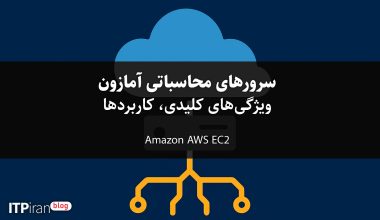Table of Contents
1. Service introduction
The Cloud Translation API allows you to translate text between languages, detect the language of the source text, and in a more advanced version, translate documents or build custom models.
Service versions:
Basic (v2): Suitable for quick text translation with the default NMT model.
Advanced (v3): Includes capabilities such as glossaries, custom models (AutoML), document translation, LLM translation models.
Key features: Translation of over 100 languages, language recognition, high scalability.
2. Capabilities and features
In this section, I will introduce the important features of the service:
Language Detection: When you don't know the language of the source text, the service can detect it.
Translate Text: Translates articles, websites, messages.
Translate Documents: In the Advanced version, various formats such as PDF, DOCX, PPTX can be translated while maintaining the format.
Glossary / Custom Dictionary: In Advanced, you can specify a fixed translation for specific terms (e.g. brand, technical term).
Custom Models (AutoML Translation): If you have a specific domain (e.g., medicine, law), you can train a custom model.
Stability and scalability: Capable of processing high volumes, integrating with other services in Google Cloud (e.g. Cloud Storage, Cloud Functions).

3. Solutions that can be offered
Here are some practical solutions that can be provided with the Translation API:
Solution 1: Website/App Localization
For companies looking to enter international markets, automatic translation of website or app content into target languages (e.g., English, Persian, French, Spanish) can be done quickly and inexpensively.
Solution 2: Customer support in different languages
In support systems or online chat, translate incoming messages in different languages into the primary support language and translate the response back into the user's language. This provides a better user experience.
Solution 3: Analyze global user feedback
If you have feedback in different languages, translate it first, then perform joint analysis (e.g. Sentiment Analysis module) without the need for analysts to switch languages.
Solution 4: Translate documents while preserving the format
For companies that have multi-page documents (e.g. contracts, reports, manuals), it can be translated while preserving the structure (PDF, DOCX) with the Advanced version.
Solution 5: Custom translation model for specific domain
For example, in the medical, legal, technical, or brand-specific fields, general translation may not be accurate enough; the Glossary or AutoML Translation mechanism comes in handy.
Solution 6: Multi-service integration
Example: Converting audio to text with Cloud Speech-to-Text and then translating it with Cloud Translation, to create subtitles for videos.
4. Sample code
Below is a simple Python code sample for text translation (Basic or Advanced):
Explanation: This code uses the Advanced (v3) version (translate_v3). It is similar for the Basic version (v2) but the library and parameters are slightly different. Documentation source: Google Cloud+1
5. Typical audience
Who usually uses this service?
Websites and applications that have a multilingual audience.
Support and CRM that need to communicate in different languages.
Data analytics companies that analyze user feedback/comments from different languages.
International businesses or brands that localize content.
Government or global organizations that have multilingual documents.
Large datasets or large-scale automated translation processes.
6. Costs and pricing structure
This section is very important because you want to know what costs you might incur.
Cost structure
Cost It is calculated based on the number of input characters (and in some models, output).
For Basic (default NMT): First 500,000 characters per month are free. Then ~$20 per million characters.
For the Advanced version (including Glossary, AutoML, LLM): Depending on the model, the rates are higher; for example, input and output characters are calculated separately.
Document translation: Priced per page; for example ~ $0.08/page To translate documents in the NMT model.
Cost example
Suppose you want to translate 1 million characters of text with the Basic model → about $20. If you want to translate 100 pages of documents with the NMT model → ~ 100 × 0.08 = $8.
Of course, if you use a custom model or AutoML, the rate might be ~$80 per million characters.
Important points about cost
If the translation is done into multiple languages, the characters are calculated for each target language.
You need to set budgets and quotas in Google Cloud to avoid unexpected costs.
Using the Basic version is more suitable for starting out, if you don't have any customization needs.
7. Additional tips for successful implementation
Before the performance, Text volume analysis Do it and estimate the costs based on that.
If you have brand or technical terms, use the Glossary to ensure consistent translation.
For documents, be sure to check that the format and formatting are maintained.
Make sure the key or service account you are using has appropriate access and security (Service Accounts, IAM).
Integration with other services: for example, storing texts in Cloud Storage, using Cloud Functions for automated streaming, using Pub/Sub for translation queues.
In high-volume scenarios or those requiring high accuracy, consider the Advanced version.
Check privacy and regulations — the texts you translate may contain sensitive data.
To control spending, set a monthly budget and enable usage reporting.
Test the translation quality with real text samples to make sure the chosen model is suitable for your field of work.
8. Conclusion
The Cloud Translation API is a powerful automated translation tool that can quickly internationalize your website, app, customer support, and data processes. By understanding the costs, choosing the right model, and implementing it correctly, you can achieve a multilingual user experience at a reasonable cost. If you have a specific area of expertise (e.g., legal, technical, brand), be sure to check out the advanced features like Glossary or the Custom model.










